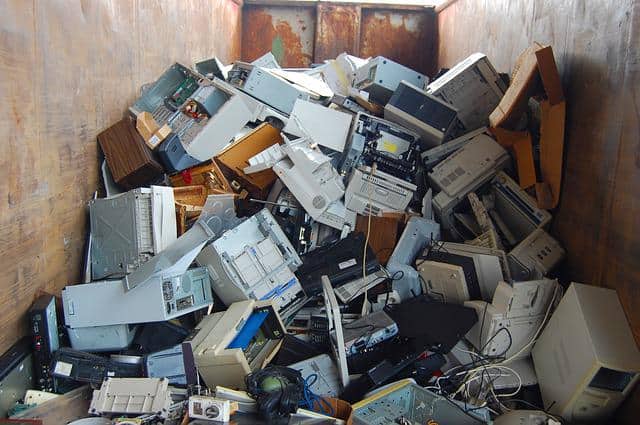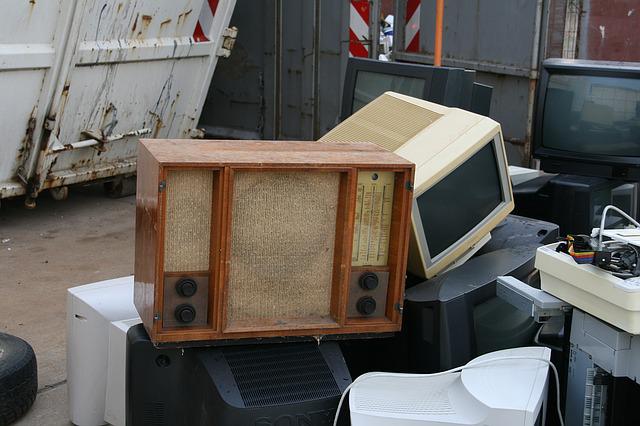Introduction – Millions Of Tons Of E-Waste
Wastes are unwanted or unusable materials. Waste is any material the owner disposes of or intends to dispose of by abandonment, transfer, recycling, treatment, or disposal. E-waste means electrical and electronic equipment that is unwanted or no longer usable. Millions of tons of e-waste are generated globally each year. Most of it is sent to landfills where it can release harmful substances into the environment or is incinerated, resulting in air pollution.
E-waste contains various hazardous materials, including lead, mercury, and cadmium. These substances can pose risks to human health and the environment if not managed properly. Improper disposal of e-waste can also lead to pollution of soil and water.

Recycling e-waste can recover valuable materials, such as metals, and help reduce environmental pollution.
When e-waste is not recycled properly, it can seriously harm human health and the environment. While reusing plastic, glass, and metal from e-waste can reduce the need for mining and manufacturing new materials, it’s important to ensure that these materials are properly recycled to avoid pollution.
Ways ways to reduce e-waste
It’s important to know how to reduce your e-waste footprint because e-waste is one of the fastest-growing types of waste globally. There are many ways to reduce your e-waste; some are easier than you might think! Here are a few ways to get started:
1. Donate or Sell
Donating or selling working electronics helps to reduce e-waste. Electronics contain harmful chemicals that can pollute the environment if not disposed of properly. When you donate or sell working electronics, you ensure that you will properly recycle them and that the harmful chemicals will not end up in the environment. In addition, donating or selling working electronics helps to support charities and organizations that reuse and recycle electronics. These organizations often sell donated electronics to fund their important work. We suggest taking a look at this guide by the EPA on e-waste recycling and donating.
2. Consume Less
Consumers in developed countries purchase billions of dollars worth of new electronics every year and then discard their old devices in landfills. However, many of these devices contain toxic chemicals that can leach into the ground and contaminate groundwater supplies. In addition, manufacturing new electronics requires large amounts of energy and water. As a result, it’s important to think carefully before purchasing new electronics and to recycle or donate your old devices when possible. By reducing your consumption, you can help to reduce your environmental impact.
3. Return Them To The Store To Reduce E-Waste
Return them to the store to reduce e-waste- it’s a simple idea, but it can make a big difference. Every year, millions of tons of electrical and electronic equipment are discarded, ending up in a landfill. Much of this equipment still works perfectly well, but newer models have simply replaced it. Return them to the store to reduce e-waste, and you can help to keep these devices out of the landfill. And as a bonus, many stores will offer a discount on your next purchase if you return an old device. So don’t throw away your old electronics – return them to the store and help to reduce e-waste. For example Best Buy has a program for taking back e-waste, as does Apple for even very small items like chargers and cables.
4. Check E-Cycling Centers in Your State And City
Check your state’s e-cycling centers to help reduce electronic waste. There are both municipal centers as well as commercial for-profit centers who will take e-waste. Many people don’t realize that their state may have laws and regulations to help manage e-waste. Check your local e-cycling center’s website or call them to find out what electronics they accept and how to properly recycle them. You can also ask about what type of data destruction services they offer to ensure your personal information is secure. Not only will you be helping to reduce e-waste, but you’ll also be keeping harmful materials out of landfills where they can leak toxins into the ground and water. Helping to reduce e-waste is important for the environment and the future generations that will inherit it.
5. Organize Your Possessions
Organizing your possessions may seem like a daunting task, but it can help to reduce e-waste. When you take the time to sort through your belongings and get rid of clutter, you’ll be surprised at how much easier it is to find things when needed. Plus, you’ll be able to recycle or donate items you no longer use, which helps keep them out of landfills. Moreover, by decluttering your space, you’ll be able to see what items you need and use, which can help you avoid purchasing unnecessary items in the future.
6. You Can Now Store Data In The Cloud
Thinking about getting a new portable hard drive to replace an old one, both of which inevitably will go into the garbage in a few years? You can now store data in the Cloud to reduce e-waste. In the past, organizations would have to store data on physical servers that took up space and required regular maintenance. But with the Cloud, data can be stored remotely, freeing up space and reducing the need for expensive hardware. Furthermore, because data is stored remotely, it’s more unlikely to be completely lost if something bad happens. The Cloud also makes it easy to share data and collaborate with others, which can help reduce paper waste. So by storing data in the Cloud, we can save space and money and help protect our environment. Finally, inherently using cloud storage means taking advantage of economies of scale. When you stop using that storage space, it’s available for another cloud customer to use immediately, thereby relieving everyone the burden of disposal.
7. Preserve What You Have
One way to reduce your electronic waste is to preserve what you have. This means keeping your electronic devices in good working condition and using them for as long as possible. One way to do this is regularly cleaning your devices and keeping them free of dust and debris. Another way to preserve your devices is to handle them carefully and avoid dropping or damaging them. Additionally, you can extend the life of your devices by properly caring for their batteries. For example, you should avoid overcharging laptops and phones and store batteries in a cool, dry place.

8. Use Your Old Mobile Phone
It’s important to remember that each time we get a new mobile phone, the old one becomes a waste. What can you do with your old mobile phone? You could give it to somebody who needs it or sell it. But what if it’s not worth anything? The answer is to recycle it. Mobile phones contain all sorts of harmful chemicals, like lead and cadmium. They shouldn’t just be thrown away with the normal trash. It would make a big difference if everyone recycled their old mobile phones.
9. Purchase Energy Star Rated Appliances
As any savvy shopper knows, there are many different ways to save money on appliances. However, few people realize that one of the best ways to save money and reduce waste is to buy Energy Star-rated appliances. Energy Star appliances are designed to be more efficient than standard models, which means they use less energy and generate less e-waste. In addition, Energy Star appliances often come with other benefits, like better warranty coverage and lower operating costs. So next time you’re in the market for a new appliance, look for the Energy Star label. It’s a simple way to save money and help reduce e-waste.
10. Teach Your Children
Teaching is one of the best ways to amplify your knowledge and spread the benefits of that knowledge. E-waste is any unwanted or broken electronic item, and it can devastate the environment. Not only does e-waste take up valuable space in landfills, but it also contains harmful toxins that can leach into the ground and contaminate soil and water. As a result, it’s super useful to teach our children how to responsibly dispose of e-waste. One way to do this is to encourage them to recycle their old electronic devices. Teaching our children about recycling e-waste can help reduce the amount of e-waste that ends up in landfills each year.
Wrapping Up
E-waste is a growing problem, but there are things we can do to reduce our impact. By following the tips in this article, we can all help to make a difference. Thanks for reading!
You can also read:
The Best Sterilizers For Food Jars: Top 7
7 Food Waste Facts That Will Change The Way You Eat
Supermarket Food Waste: Impact & Solutions
Going Zero Waste: A Guide to Getting Started – 2022
